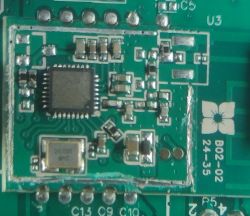
Hello my dear friends. After a short break, I'm back to testing smart home devices. This time I invite you to a short test of the BlitzWolf BW-IS9 flood/leak sensor. Here I'll test its sensitivity, internal design (including moisture protection) and try to connect it to my own ZigBee gateway on the Home Assistant platform.
Purchase the sensor
I found the product online under "BlitzWolf® BW-IS9 ZigBee Water Leak Sensor Smart Flood Detector Alarm Real-Time App Alerts Notification IP64 Waterproof For Home Basement Kitchen Bathroom Laundry Room". I paid about $25 for it, which is about $100. This is quite a lot, but products on ZigBee as a rule are more expensive than those on WiFi.
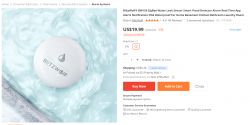
I specially chose a store where shipping is from the Czech Republic. Then the package reaches me in a few days.
The seller at the outset warns that you need to have a Zigbee BlitzWolf gateway. This is not true, I intend to use this product with Home Assistant and the ZigBee environment there:
Quote:
Zigbee 3.0 Gataway is required to work with BW-IS9 Zigbee Water Leak Sensor
Promotional graphics. On the bottom of the product you can see three "feet" which detect the liquid:
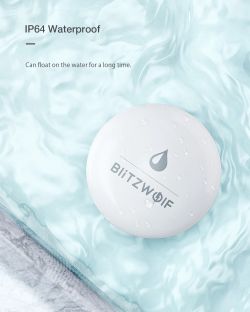
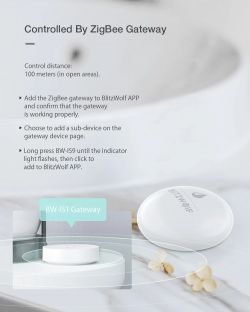
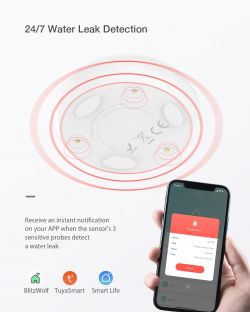
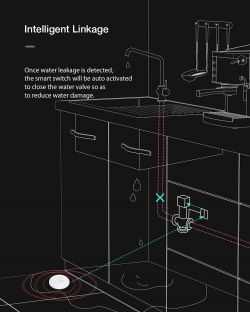

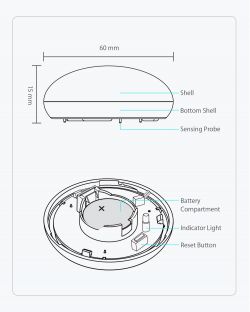 Product parameters:
Product parameters:
| Model | BW-.IS9 | |
| Size | ||
| BW-. | 60 * 15mm | |
| Communication protocol | ZigBee | |
| Range | 100m (outdoors) | |
| Operating voltage | 2.1-3.3V | |
| Battery model | CR2450 | |
| Battery life | Up to 1 year | |
| Low battery voltage alert | from 2.3V | |
| Operating current | in sleep mode ≤10uA;in alarm mode ≤ 8mA | |
| Detection method | the fluid must conduct electricity | |
| Work environment | -.10℃~50℃;≤ 95% RH | |
| Constrola App | BlitzWolf/Smart Life/Tuya APP | |
| Waterproof level | IP64 |
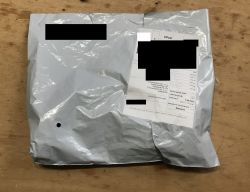
A large plastic bag and inside a small box.
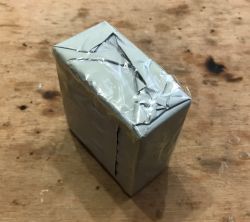
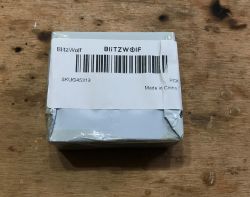
Product SKU code: SKUG45319
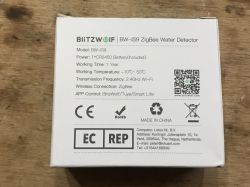
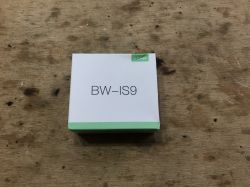

Set contents:

Instructions:
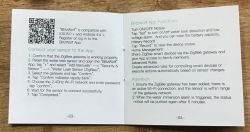
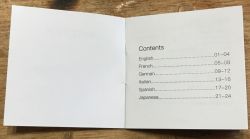
Pairing with Home Assistant Pairing with Home Assistant is very simple.
We need to have a server prepared, such as following my instructions:
https://www.elektroda.pl/rtvforum/topic3777098.html
Then we remove the casing from the device (rotary motion, slightly twist the top of the casing), unlock the CR2450 battery (remove the strip isolating it so that it does not discharge in storage) and press the button longer:
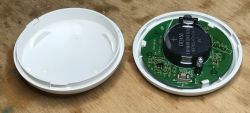
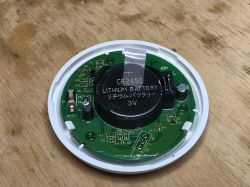
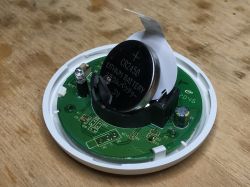
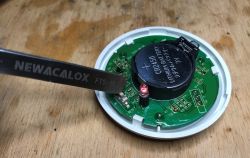
Home Assistant detects the new device:
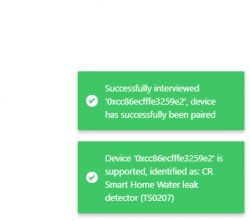
Device appears in the list (here No. 7):

The Home Assistant says it is model TS0207 and its manufacturer is CR Smart Home:

Variables provided; as you can see, % of battery life is not available, but a true/false variable is available to tell if the battery is low.

Interesting is the "tamper" variable - in theory this is supposed to tell if someone has messed with the sensor, but I have not been able to trigger changing it to "true". The HA documentation only says " tamper: on means tampering detected, off means no tampering (clear) ".
Check if sensor detects water Tap water:
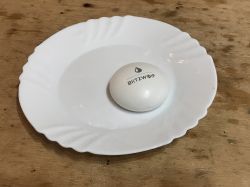
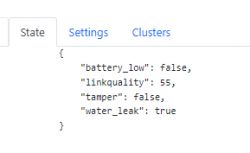
Distilled water:


In both cases it detects moisture, although there must be enough water to touch at least two sensors. As for the quality of this distilled water what I have I am not sure, but the ground is that the sensor works.
Interior of BW-IS9 Basically, we can already see the interior at the pairing,
 NOTE - the board is flooded with some kind of varnish that is intended to make it more resistant to moisture. This is visible in the photo below:
NOTE - the board is flooded with some kind of varnish that is intended to make it more resistant to moisture. This is visible in the photo below: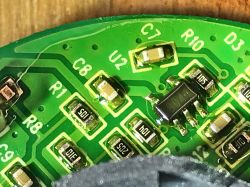
Unfamiliar circuit, perhaps an amplifier associated with the water sensor. At first I thought it was a step up converter generating a constant 3.3V for the ZigBee module from a CR battery, but that would be redundant as the battery gives about 3V and the ZigBee module can operate on voltages from 2.2V. The code on the component is 804, I couldn't find its note.
The board sticks to the base only on the three sensor legs, which are slipped into the plastic:

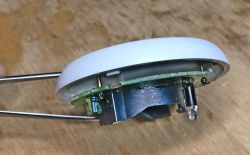
Capacitor:
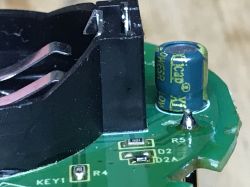

On the bottom we have a ZigBee module:
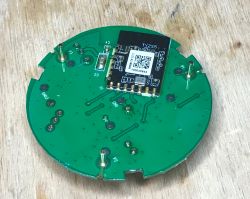


The TYZS5 module, along with the 38 quartz resonator.4MHz, or EFR32MG13P732F512GM48.
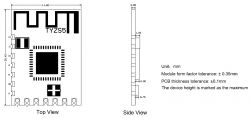
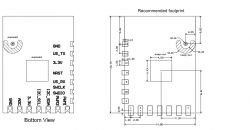
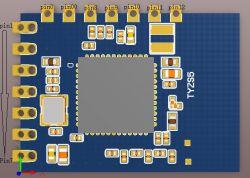 Rather unsurprisingly. I wonder if this layer of varnish is actually effective in protecting the plate....
Rather unsurprisingly. I wonder if this layer of varnish is actually effective in protecting the plate....
Summary
This sensor is realized on the basis of the ZigBee TYZS5 module and at this point is fully supported by Home Assistant. I have no objections to its sensitivity and response time to flooding, although the fact is that the liquid has to short circuit at least two of its pins for the event to be detected.
Additionally, the center of the product has indeed been additionally protected by some kind of thin varnish cover, which may also make possible servicing of the board more difficult. Although there is unlikely to be anything broken there. There is only one circuit whose note I did not find and a ZigBee module.
Finally, I will ask you - do any readers use this type of sensor? Or do you think that $25 + the cost of batteries is too much for information about the fact that water spilled on the floor? .
Cool? Ranking DIY Helpful post? Buy me a coffee.






